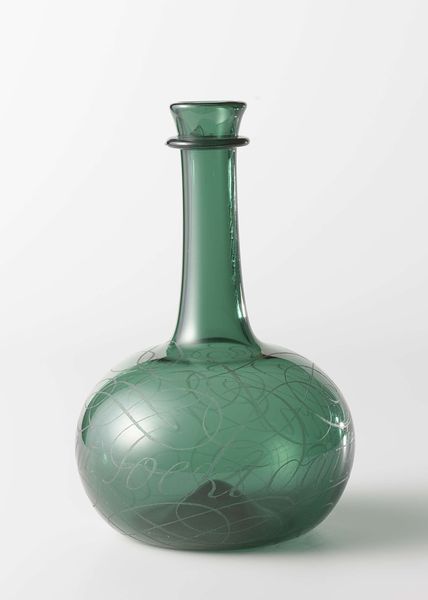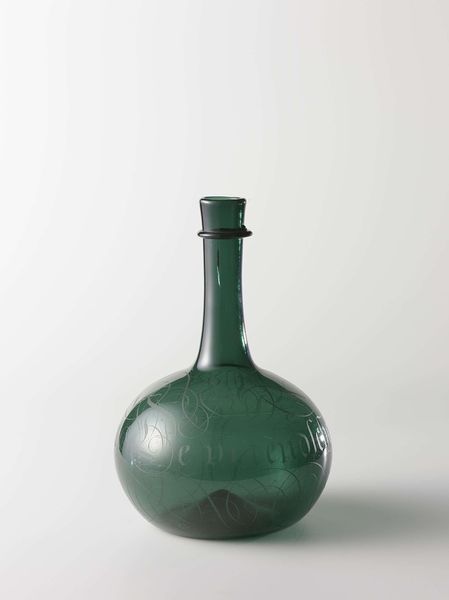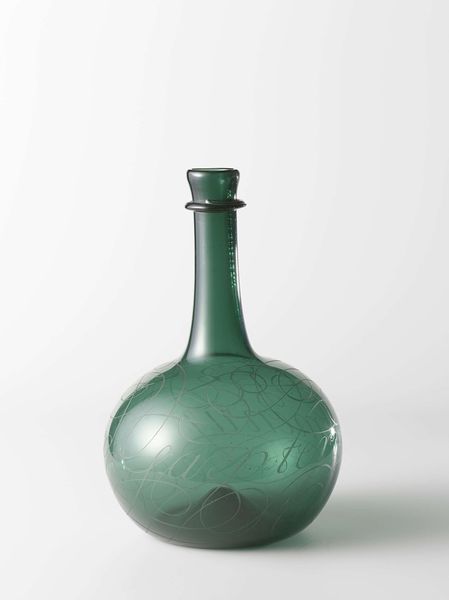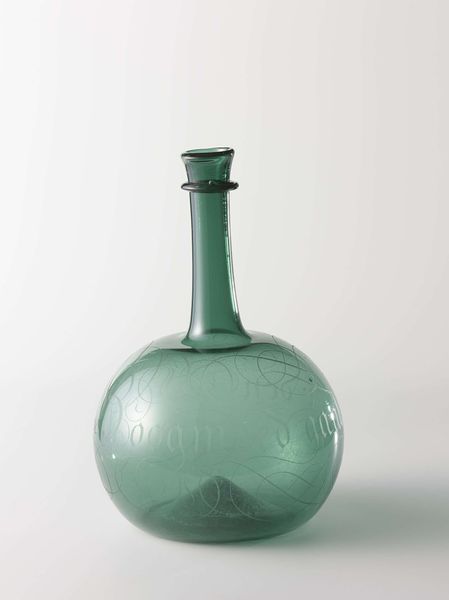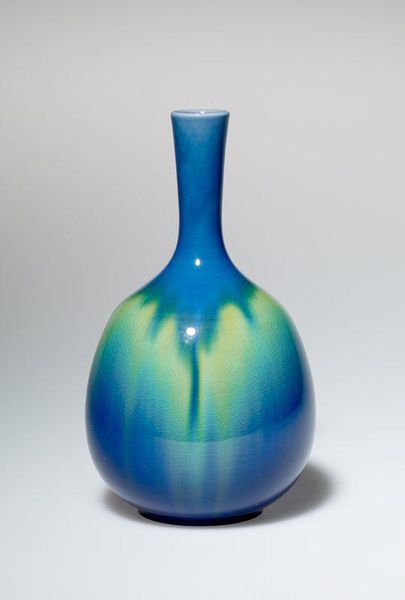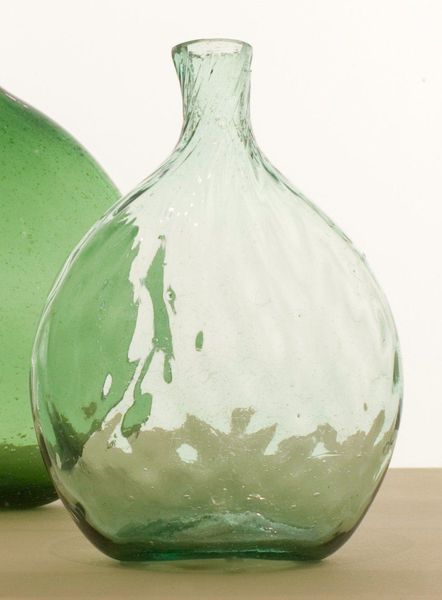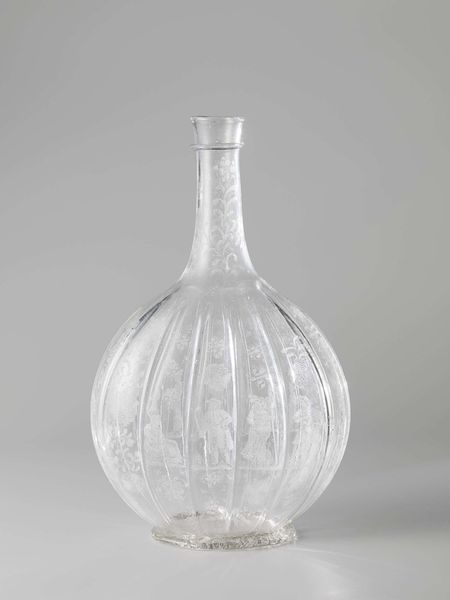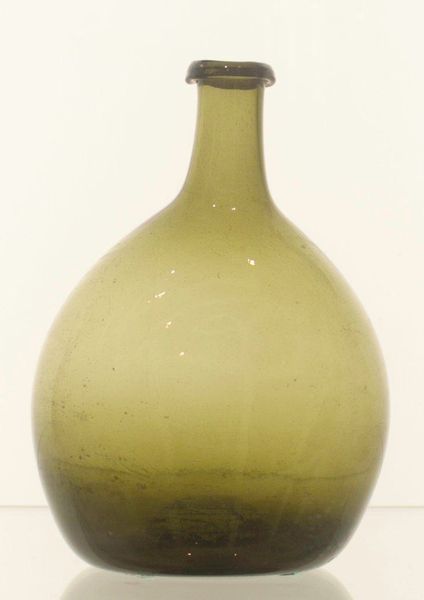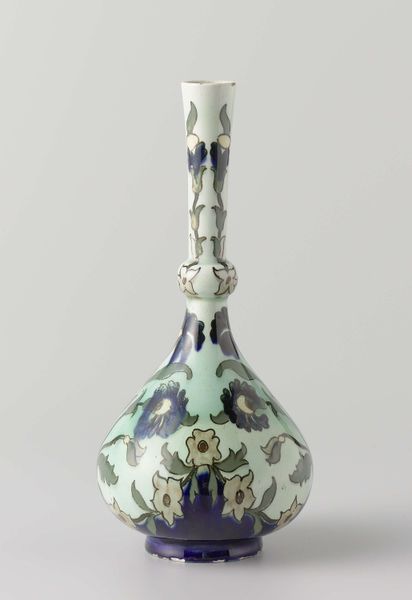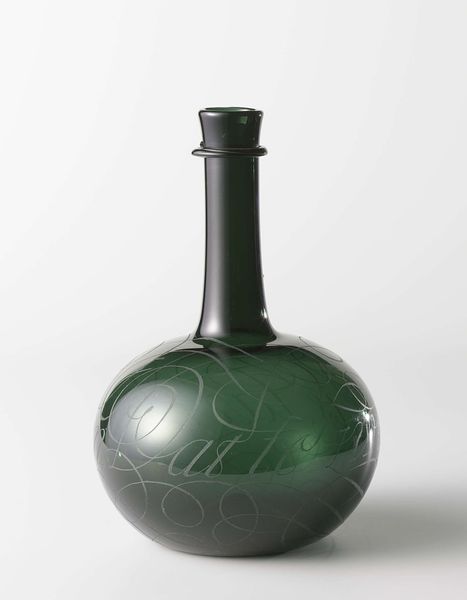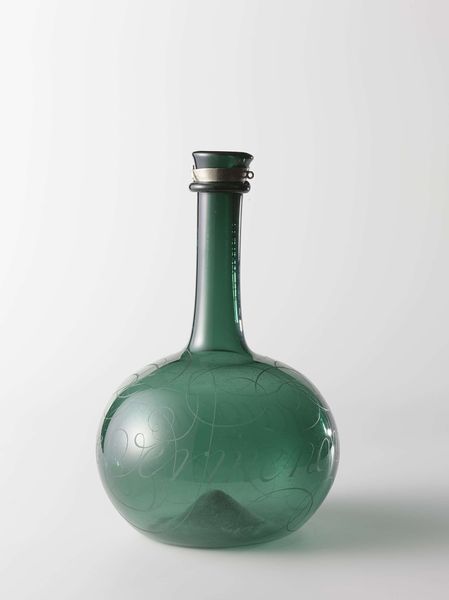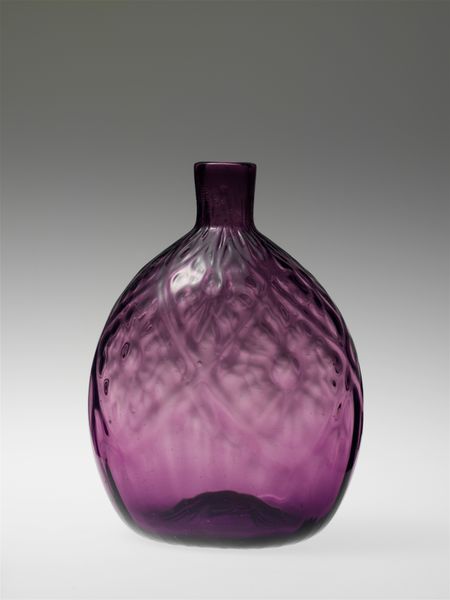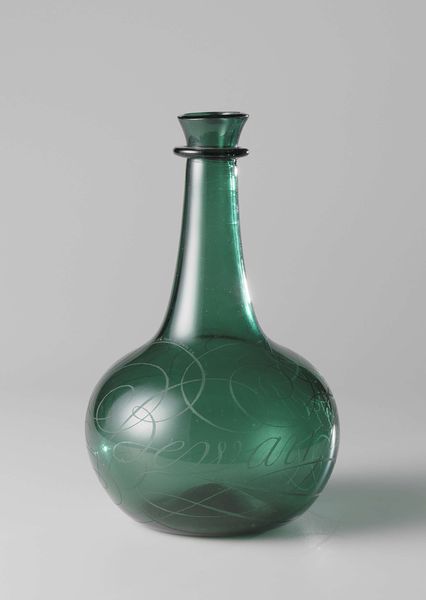
photography, glass
#
photography
#
glass
Dimensions: 8 3/4 x 4 1/4 x 4 1/4 in. (22.2 x 10.8 x 10.8 cm)
Copyright: Public Domain
Editor: This is a "Club Bottle," likely from the 19th century, made by the Mantua Glass Company. I'm immediately struck by how the spiraling lines in the glass create a sense of movement, like water. How might we interpret this functional object through a wider lens? Curator: Absolutely. Beyond its utilitarian purpose, consider the socio-political context of 19th-century glass production. Who were the glassworkers? Often, these were marginalized communities. We should ask ourselves: who had access to these beautifully crafted items, and who was denied access based on class, race, or gender? What narratives of labor are embedded in this object? Editor: That’s fascinating. I hadn't considered the social dynamics of its production and consumption. Were there particular aesthetics or cultural values associated with glassware at the time? Curator: Certainly. Glassware, especially in the 19th century, was intertwined with ideals of domesticity and bourgeois identity. The rise of consumer culture meant objects like these were powerful signifiers of status and taste, which served to reinforce existing hierarchies. Does this spiraling pattern, which perhaps emulates flowing liquid, also serve as a distraction, concealing other labor issues? Editor: It’s incredible how one seemingly simple object can reveal so much about the past. So this "Club Bottle" can act as a lens through which we can see the issues of labor and social standing. Curator: Precisely! By interrogating the Club Bottle we expose broader questions of power, access, and the ways in which even everyday objects reflect the complex social fabric of their time. Understanding such complexities promotes empathy. Editor: I definitely see that now, thanks! Curator: Likewise; thanks for prompting my thoughts!
Comments
No comments
Be the first to comment and join the conversation on the ultimate creative platform.
